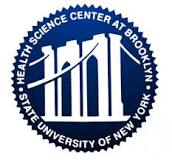Light Emitting Diode-Red Light (LED-RL) Phototherapy for Skin Scarring Prevention
| Status: | Recruiting |
|---|---|
| Conditions: | Orthopedic, Cosmetic |
| Therapuetic Areas: | Dermatology / Plastic Surgery, Orthopedics / Podiatry |
| Healthy: | No |
| Age Range: | Any |
| Updated: | 3/22/2019 |
| Start Date: | March 18, 2019 |
| End Date: | March 2020 |
| Contact: | Julie Nguyen, MD |
| Email: | LABresearch@downstate.edu |
| Phone: | 507-400-3376 |
Skin scarring (fibrosis) is a common complication in the wound healing process and remains a
therapeutic challenge. Scar formation often occurs following injury to the skin such as
surgery, trauma, and burns. The goal of this study is to evaluate the safety and efficacy of
visible red light as a modality to reduce skin scarring after mini-facelift surgery. Based on
laboratory data, light emitting diode-red light (LED-RL) phototherapy may lessen
post-surgical skin fibrosis clinically.
therapeutic challenge. Scar formation often occurs following injury to the skin such as
surgery, trauma, and burns. The goal of this study is to evaluate the safety and efficacy of
visible red light as a modality to reduce skin scarring after mini-facelift surgery. Based on
laboratory data, light emitting diode-red light (LED-RL) phototherapy may lessen
post-surgical skin fibrosis clinically.
Skin fibrosis is a significant global health problem that has a profoundly negative impact on
quality of life. Characterized by excessive fibroblast proliferation and collagen deposition,
skin fibrosis underlies a wide spectrum of dermatologic conditions ranging from pathologic
scars secondary to injury (e.g., burns, surgery, trauma) to immune-mediated diseases.
Effective anti-scarring therapeutics remain an unmet need, underscoring the importance of
developing novel approaches to treat and prevent skin fibrosis.
In vitro data show that LED-RL can modulate key cellular and molecular processes involved in
skin fibrosis. Two phase I clinical trials (STARS 1 and STARS 2) demonstrated the safety and
tolerability of LED-RL at fluences of 160 J/cm2 up to 480 J/cm2 on normal human skin. The
administration of LED-RL phototherapy in the early postoperative period may optimize wound
healing and prevent excessive scarring. The results from this study may change the current
treatment paradigm for fibrotic skin diseases and help to pioneer LED-RL as a safe,
non-invasive, cost-effective, portable, at-home therapy for scars.
quality of life. Characterized by excessive fibroblast proliferation and collagen deposition,
skin fibrosis underlies a wide spectrum of dermatologic conditions ranging from pathologic
scars secondary to injury (e.g., burns, surgery, trauma) to immune-mediated diseases.
Effective anti-scarring therapeutics remain an unmet need, underscoring the importance of
developing novel approaches to treat and prevent skin fibrosis.
In vitro data show that LED-RL can modulate key cellular and molecular processes involved in
skin fibrosis. Two phase I clinical trials (STARS 1 and STARS 2) demonstrated the safety and
tolerability of LED-RL at fluences of 160 J/cm2 up to 480 J/cm2 on normal human skin. The
administration of LED-RL phototherapy in the early postoperative period may optimize wound
healing and prevent excessive scarring. The results from this study may change the current
treatment paradigm for fibrotic skin diseases and help to pioneer LED-RL as a safe,
non-invasive, cost-effective, portable, at-home therapy for scars.
Inclusion Criteria:
- Provision of written informed consent for all study procedures
- Stated willingness to comply with all study procedures and availability for the
duration of the study
- Suitable candidate for elective mini-facelift surgery
- Pass a screening photosensitivity test
Exclusion Criteria:
- Current use of any photosensitizing medications
- Light-sensitive conditions
- Diabetes mellitus
- Systemic lupus erythematosus
- Current tobacco use
- History of bleeding or coagulation disorder
- Lax skin associated with genetic disorders
- Open wounds on the face or neck
- Fibrotic skin disease, pre-existing scar(s), or other skin conditions affecting the
periauricular skin
- History of surgery or procedure involving or affecting the periauricular skin within
the past 6 months (e.g., prior facelift, fillers, laser therapy)
- Tattoos that cover the proposed treatment sites on the periauricular skin
- Any other medical condition(s) that could be compromised by exposure to the proposed
treatment
We found this trial at
1
site
450 Clarkson Avenue
Brooklyn, New York 11203
Brooklyn, New York 11203
(718) 270-1000

Principal Investigator: Jared Jagdeo, MD, MS
Phone: 507-400-3376
SUNY Downstate Medical Center Formally known as The State University of New York Health Science...
Click here to add this to my saved trials